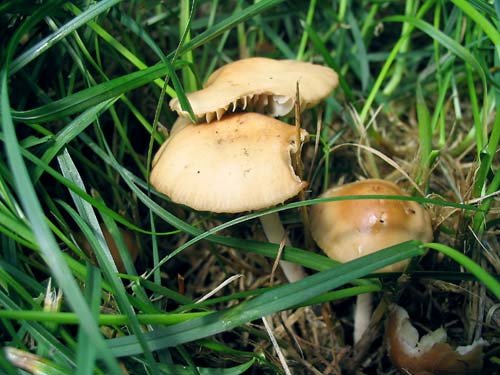Honey agaric (Marasmius oreades)
- Division: Basidiomycota (Basidiomycetes)
- Subdivision: Agaricomycotina (Agaricomycetes)
- Class: Agaricomycetes (Agaricomycetes)
- Subclass: Agaricomycetidae (Agaricomycetes)
- Order: Agaricales (Agaric or Lamellar)
- Family: Marasmiaceae (Negniuchnikovye)
- Genus: Marasmius (Negnyuchnik)
- Type: Marasmius oreades (Meadow mushroom)
- Meadow rot
- Marasmius meadow
- Meadow
- clove mushroom

Hat:
The diameter of the cap of the meadow agaric is 2-5 cm (larger specimens are also found), conical in youth, then opens to almost prostrate with a blunt tubercle in the center (old dried specimens can also take a cupped shape). The color under normal conditions is yellowish-brown, sometimes with slightly noticeable zonation; when dried, the hat often acquires a lighter, off-white color. The pulp is thin, pale-yellow, with a pleasant taste and a strong peculiar smell.
Records:
The meadow honey agaric has rare plates, from those that have grown at a young age to free ones, rather wide, whitish-cream.
Spore powder:
White.
Leg:
Height 3-6 cm, thin, fibrous, whole, very hard in adult mushrooms, cap color or lighter.
Meadow fungus is found from early summer to mid or late October in meadows, gardens, glades and forest edges, as well as along roads; bears fruit profusely, often forming characteristic rings.
Meadow honey fungus is often confused with wood-loving Collybia, Collybia dryophylla, although they are not very similar – Collybia grows exclusively in forests, and its plates are not so rare. It would be dangerous to confuse the meadow honey agaric with the whitish talker, Clitocybe dealbata – it develops in approximately the same conditions, but it is given out by fairly frequent descending plates.
Universal edible mushroomSuitable also for drying and soups.









